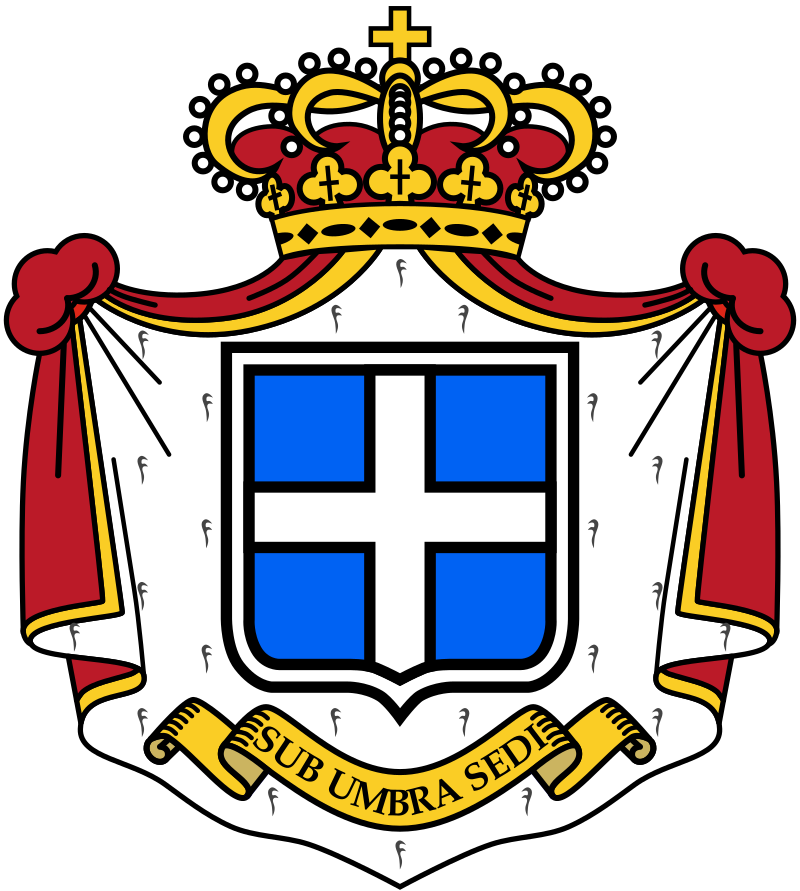Orders of Chivalry
Principality of Seborga
The Principality of Seborga is a self-proclaimed democratic monarchy located in the northwestern Italian Province of Imperia in Liguria, near the French border and Monaco. The principality is in coexistence with, and claims the territory of, the town of Seborga, which is an Italian municipality.
History of the principality
The first historical evidence of Seborga can be traced back to the fifth century BC, when the pirate raids pushed the inhabitants of the coastal strip of extreme western Liguria to take refuge in the hinterland, where it is however conceivable that some sporadic settlements were already present around the 2000 BC. Liguria, a region of north-western Italy, its capital being Genoa is a narrow strip of land which is bordered by the sea, the, Alps and the Apennine Mountains.
Around 250 BC, Western Liguria, at the time part of Celtic Gaul, was conquered by the Romans. The settlements present there were registered and classified as ” burga ” and the inhabitants began to assume an orderly structure, with the establishment of rules of common life. The Romans were initially not well regarded by the local population since the latter were considered barbaric. The inhabitants therefore always held a hostile attitude towards the Romans, which only changed when they were granted Roman citizenship.
In 770, following the marriage between Ermengarda, daughter of the Lombard king Desiderio, and Charlemagne, the Lombard Kingdom, which included Liguria, was annexed to the Kingdom of France, which in turn was incorporated into the Carolingian Empire. In 789 Charlemagne, as part of the organization of the empire, established the County of Ventimiglia within the March of Tuscany, which included Seborga. The March of Tuscany was a frontier march of the Kingdom of Italy and the Holy Roman Empire during the Middle Ages.
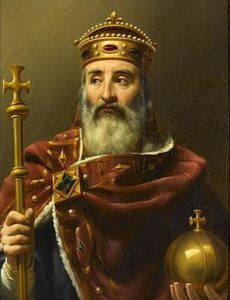
Emperor Charlemagne
In 954 A.D., Count Guidone of Ventimiglia, prior to his departure to fight the Moors with William the Liberator, donated the territory of Seborga to the Benedictine monks of the Lérins Abbey located on the island of on the island of Saint-Honorat. The notarial deed of donation today preserved in Turin is considered by almost all historians to be an apocryphal document, however it is certain that the donation actually took place: in fact, an original document has reached the present day bearing a sentence of 1177 about a dispute about the borders between the properties of the monks and those of the Counts of Ventimiglia, and in this authentic document the donation is explicitly confirmed. The donation concerned an area of about 14 square kilometers.
In 1079, in accordance with the widespread custom of the time, Pope Gregory VII, granted the abbots of Lérins Abbey title of Prince-Abbots of Seborga. Consequently, the abbot claimed to be independent of the local spiritual authority and was a dependency of the Pope. This caused tensions with the Bishop of Ventimiglia, who claimed to be the legitimate spiritual authority and the right to collect tithes on the crops. Throughout the course of the 12th century, several Popes were called on to intervene, each time ruling in favor of the Abbot of Lérins.
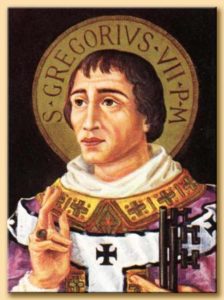
Pope Gregory VII
While sovereignty technically belonged to the Prince-Abbot, authority was given to a magistrate known as a Podesta. Primarily a judicial magistrate responsible for judging accused of having committed a crime in the territory of the Principality, the Podesta was assisted by two consuls, who were in charge of bureaucratic-administrative functions of the principality. The Abbott mainly dealt with foreign affairs, while internal affairs were managed by the Podesta.
The Principality of Seborga remained an Ecclesiastical State until Jan. 20, 1729, when it was sold to Vittorio Amedeo II, of Savoy, Prince of Piedmont and King of Sardinia. It was observed however, that the Savoy’s never registered the transaction, a failure that, Prince Giorgio claims invalidated the sale, Prince The error was compounded when Seborga was not mentioned by the Congress of Vienna in 1815, nor in the act of unification of Italy in 1861, nor in the formation of the Italian republic in 1946.
The Knights templar and the "great secret"
Legend states that Seborga was a stronghold of the Knights Templar. Murals and symbols can be found on some of the principality’s ancient stone walls.
In 1118 the first nine knights of the Poor Army of Christ were ordained in Seborga before they headed off on crusade to the Holy Land. It is said Seborga was the last place in Europe the Poor Army of Christ visited as an official sanctioned Knighthood of the Cistercian Order prior to going to the Holy Land. They would later return to the town, as members of the Knights Templar. Local legend has it that Templars returning from Jerusalem hid something of great value in Seborga. This is known as the “Great Secret”.
No one today knows, or will reveal, what the secret it is or where it is hidden, but the theories of what was hidden include a spiritual message, the bones of King Solomon, and even the Holy Grail itself.

Knight Templar and the holy grail

Engraved stone with templar markings located in seborga
re-foundation of the principality
The claim of sovereignty for Seborga was put forward in 1963 by a local flower grower named Giorgio Carbone who claimed to have found documents from the Vatican archives which indicated Seborga had never been a possession of the House of Savoy and was therefore not legitimately included in the Kingdom of Italy when it was formed in 1861 during Italian unification. Carbone claimed that Seborga had existed as a sovereign state of Italy since 954, and that from 1079 it was a principality of the Holy Roman Empire. Sovereignty claims assert that Seborga was overlooked by the Congress of Vienna in its redistribution of European territories after the Napoleonic Wars.
Carbone promoted the idea of Seborgan independence as a principality, and in 1963 the town’s inhabitants elected him as their head of state. Carbone assumed the style and title “His Tremendousness” Prince Giorgio I of Seborga. In 1995, the people of Seborga approved the new constitution with a vote of 304 to 4. Later that year, a new crown council was elected, and Prince Giorgio is elected as Prince for life. Prince George I passed away on 25 November 2009.
In addition to re-establishing the principality, Prince Giorgio formed a “cabinet” of ministers; minted a local currency, the luigino; introduced a Seborgan flag; printed stamps; and formed a ceremonial guard corps.

Flag of seborga
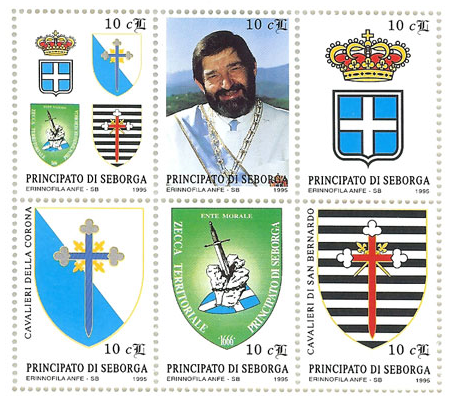
Stamps of seborga
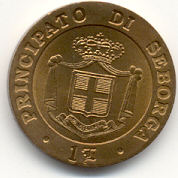
Coin (luigino) of Seborga
Monarchs of the principality
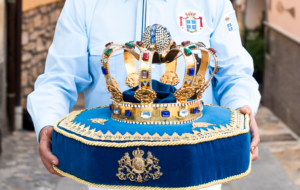
The crown of seborga
HSH George I, Prince of Seborga

Giorgio Carbone reigned from May 14, 1963 until November 25, 2009
HSH Marcello I, Prince of Seborga
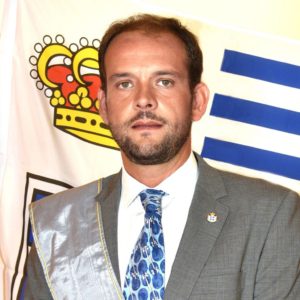
Marcello Menegatto reigned from April 25, 2010 until November 10, 2019
HSH the Princess Nina of Seborga
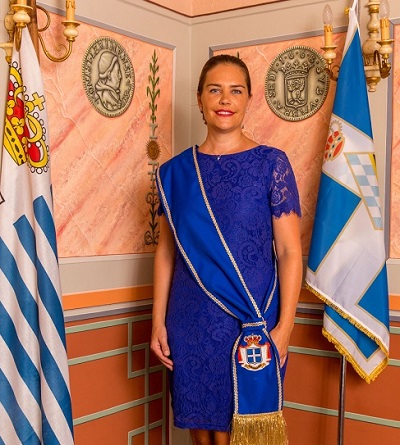
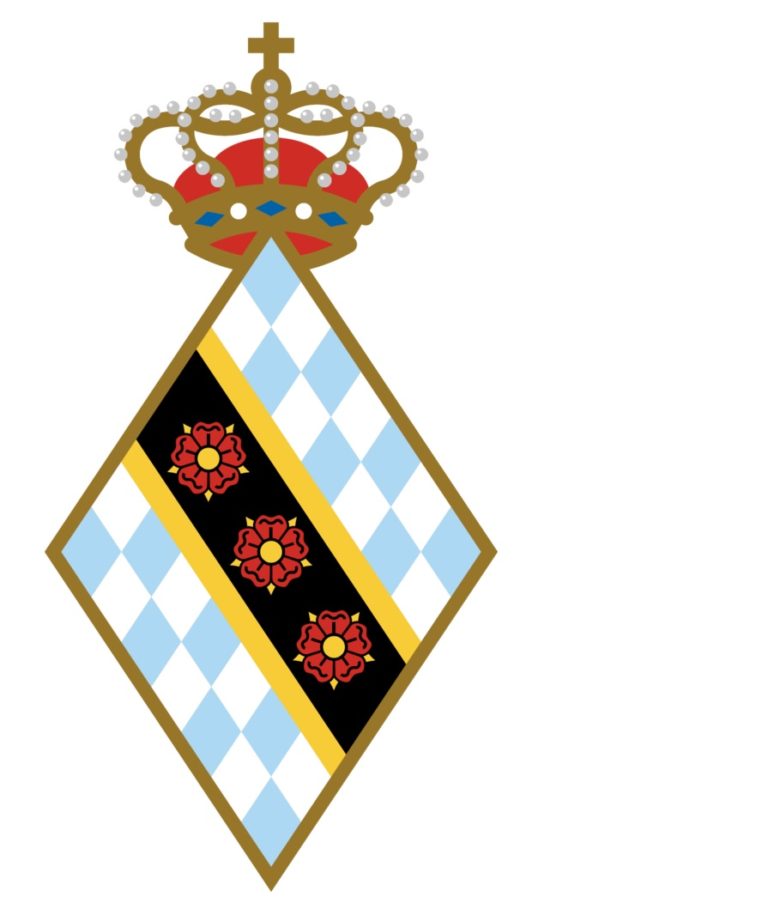
Her Serene Highness the Princess Nina of Seborga, born Nina Menegatto, was born in Kempten (Germany) on November 6, 1978 attended the Institut Monte Rosa in Montreux, Switzerland, and later earned an MBA in marketing from the International University of Monaco. Her Serene Highness is a native German speaker who also speaks fluent Italian, English and French.
Her Serene Highness has been involved in Seborga’s affairs for over 15 years. A great supporter of the Principality from 2010 to 2019, she was twice elected as Counselor of the Crown of the Principality of Seborga, where she oversaw the management of Foreign Affairs. In this capacity, she promoted Principality of Seborga abroad from a tourist, historical and commercial point of view.
Following the abdication of Prince Marcello I of Seborga, on October 2, 2019 she applied to become Princess of Seborga. On October 13, the Crown Council announced the acceptance of her candidacy.
On November 10, 2019 she was elected Princess of Seborga, the first woman to hold this office.
On August 20, 2020 she received the official investiture as Princess of Seborga.
historical princes of seborga
The abbots of Lérins Abbey ruled as monarchs of Seborga from 954 until 1729. The first rulers were simply abbots of the abby. in 1079, Aldebert II of Grasse was titled Prince-Abbot.
The last Prince-Abbot was Faustus of Ballon. He reigned from 1722 until 1729. After his reign, the throne was vacant from January 30, 1729 until May 14, 1963.
Chivalric orders
Order of Saint bernard
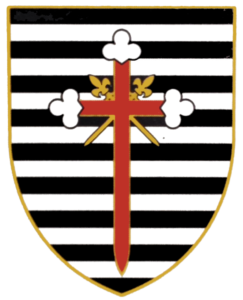
The Order of St. Bernard was organized to defend of the sacred territory of the Principality of Seborga.
The insignia of the Knights of St. Bernard consists of a Samnite shield that started horizontally with ten white stripes alternating with as many blacks and, on the pole, a sharp and clovered Red Latin Cross, encumbered with two swords liled to the hilt, gilded, crossed at the junction of the two arms of the cross.
White knights of seborga

The White Knights of Seborga are placed to protect the the Prince or Princess.
The historical symbols of the Order are the Red Cross Patente, the Agnus Dei in an upright position and the Ottagona Red Cross with swallowtail tips, issued in 1611 by Abbot Caesarerius of St. Paul, Grand Prior of the Order of White Knights and also Prince of Seborga..
The guard corps of seborga
The Guard Corps is the guard of honor of the Principality of Seborga.
With representation and ceremonial functions, the Guards protect the figure of the Princess and her family, assisting her on official occasions; in some circumstances they guard national borders. There is also a mounted regiment within the Guard Corps.
The Corps, led by a Commander, answers to the crown, through the Crown Defense Advisor.
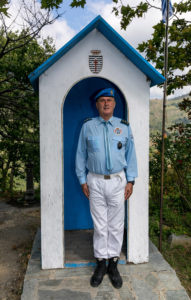
This section was produced with the assistance and permission of the Crown Council of the Principality of Seborga for purpose of divulgation only. Her Serene Highness Princess Nina , as the head of principality, actively promotes the Principality of Seborga abroad from a tourist, historical, and commercial point of view. While not officially recognized by Italy, the dual citizens of the Principality of Seborga are equally dedicated to preserving the unique and interesting culture and history of an area which pre-dates the Roman Empire. For more information on the Principality of Seborga, or to contact Seborga’s government, or to inquire about tourism to the area, please visit , please the offical website for the Principality of Seborga at https://www.principatodiseborga.com/pds/
